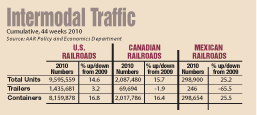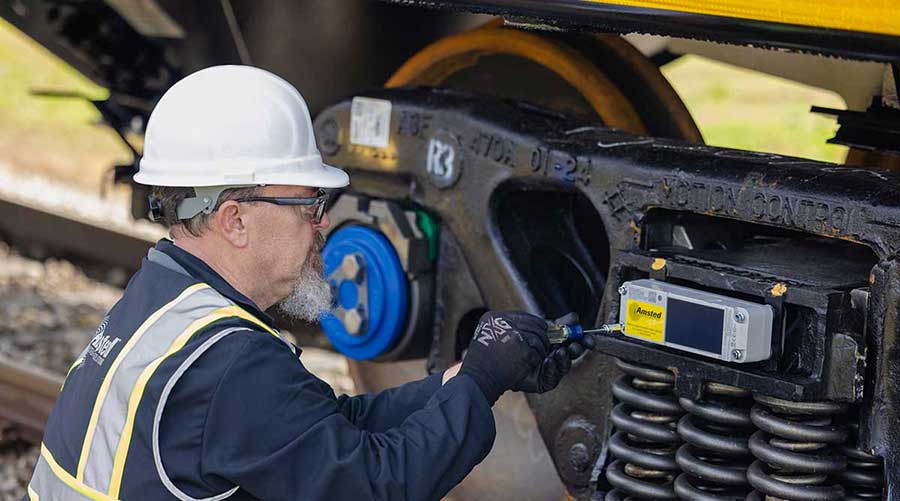Stay updated on news, articles and information for the rail industry
December 2010
Part 1 : Rail industry data and trends from Progressive Railroading December 2010
Rail News: Rail Industry TrendsRail industry data and trends from Progressive Railroading December 2010
Not a single U.S. Class I was "revenue adequate" in 2009, meaning none of the large roads achieved a rate of return that year equal to or greater than the Surface Transportation Board's (STB) calculation of the freight-rail industry's average cost of capital, according to a STB decision issued Nov. 9. The board previously determined that the rail industry's cost of capital in 2009 was 10.43 percent. The STB compared that figure with 2009 return on investment (ROI) data obtained from railroads' annual reports to calculate a revenue adequacy figure for each Class I.
Here are the STB's 2009 tax-adjusted ROI figures:
- BNSF Railway Co., 8.67 percent;
- CSX Transportation Inc., 7.3 percent;
- Grand Trunk Corp. Consolidated (including all CN U.S. affiliates), 6.04 percent;
- Kansas City Southern Railway Co., 6.51 percent;
- Norfolk Southern Railway, 7.69 percent;
- Soo Line Railroad Co. (including all Canadian Pacific U.S. affiliates), 6.28 percent; and
- Union Pacific Railroad, 8.62 percent.
Intermodal traffic surged in the third quarter, driven by a "remarkable" jump in international volume and all-time peak in domestic volume, according to the Intermodal Association of North America's (IANA) "Intermodal Market Trends & Statistics" report released last month.
Total volume climbed 20.3 percent to 3.6 million units; ISO container traffic, 28.1 percent to 2 million units; total domestic equipment volume, 11.7 percent to 1.6 million units; domestic container traffic, 13 percent to 1.2 million units; and trailer volume, 8.5 percent to 428,767, compared with third-quarter 2009 levels. Domestic container traffic could have been higher because "domestic container shipments may have been limited by capacity constraints," IANA officials wrote, adding that the constraints "may have compelled" some shippers to use trailers.
However, domestic container volumes continued to outpace the overall economic recovery and increase share vs. other modes. Overall, the resurgence suggests intermodal traffic is "well on the way to regaining the ground lost during the recession — third-quarter volumes were only 2.6 percent below the previous peak levels of 2008," according to the report.


 2025 MOW Spending Report: Passenger-rail programs
2025 MOW Spending Report: Passenger-rail programs
 Gardner steps down as Amtrak CEO
Gardner steps down as Amtrak CEO
 Guest comment: Oliver Wyman’s David Hunt
Guest comment: Oliver Wyman’s David Hunt
 Women of Influence in Rail eBook
Women of Influence in Rail eBook
 railPrime
railPrime








